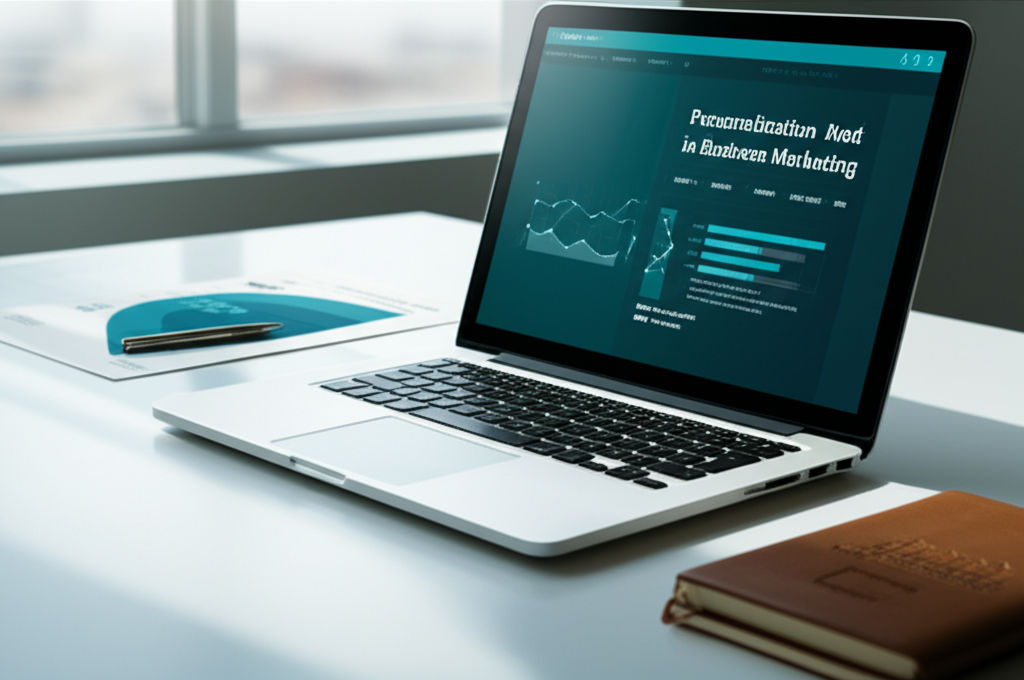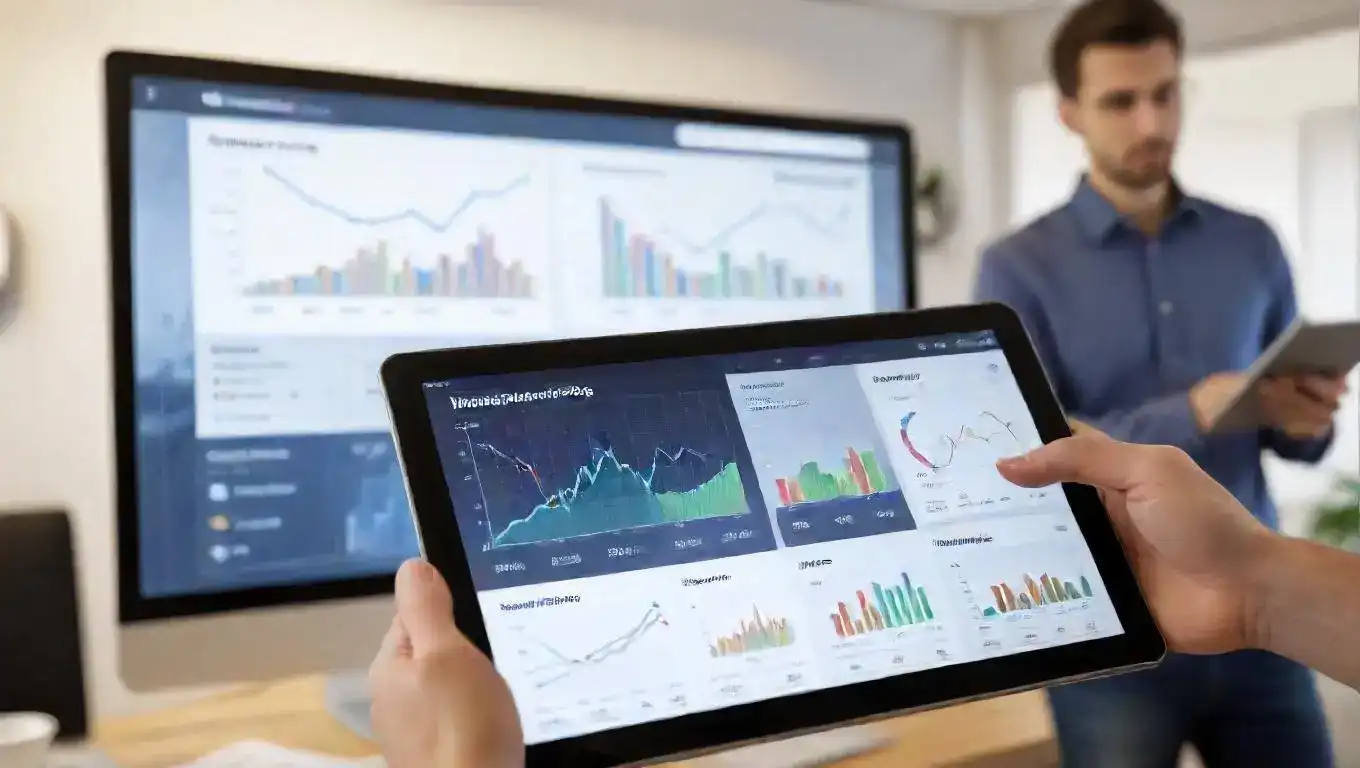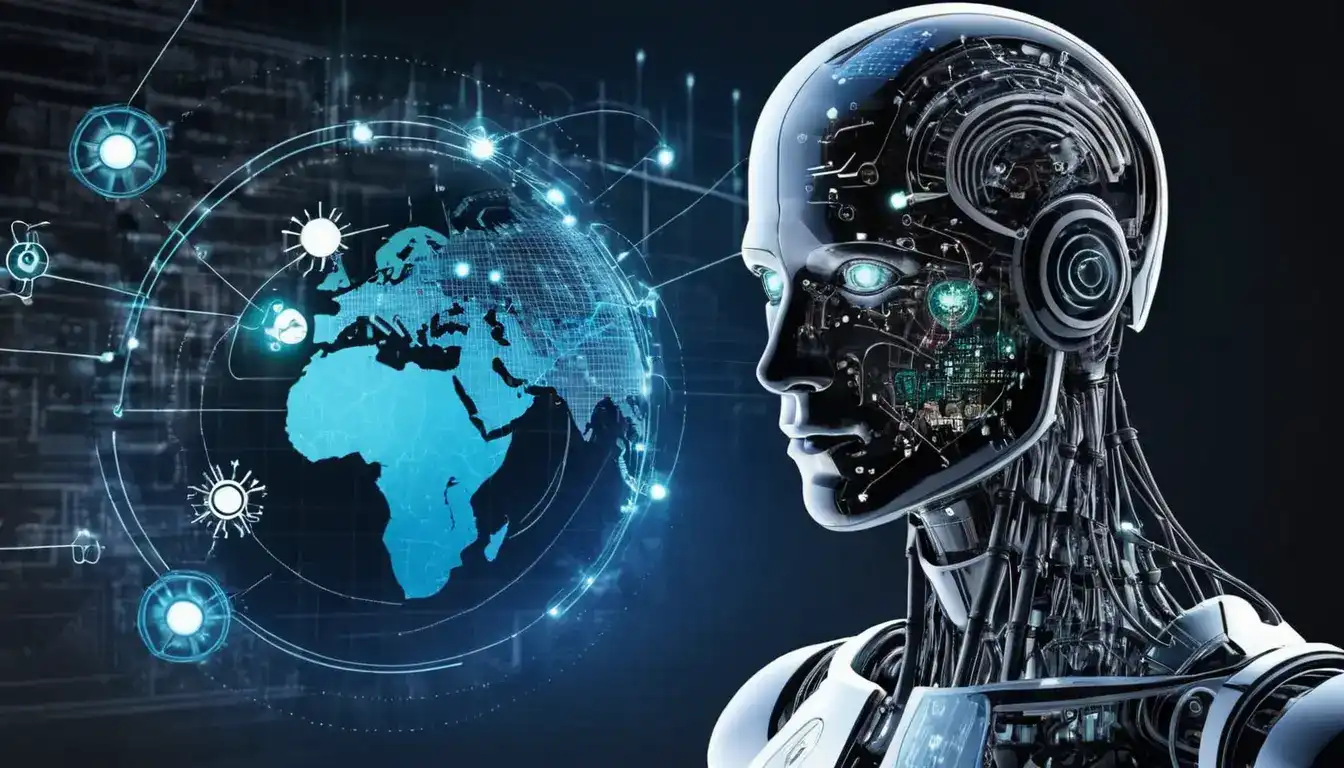Data Analytics: Shaping Future Learning Paths
Emily Willis

Photo: Data Analytics: Shaping Future Learning Paths
The future of learning is here, and it's being powerfully shaped by something you might not immediately connect with education: data analytics. Far from being a dry, technical subject, data analytics is revolutionizing how we learn, teach, and grow, creating personalized and effective learning paths for everyone. It's about understanding how people learn, what they struggle with, and how to make education truly work for each individual.
This article will explore how data analytics is becoming the backbone of modern learning, from personalized education to identifying the skills you'll need for tomorrow's job market. Get ready to discover how data isn't just numbers, but a powerful tool for unlocking your full learning potential.
What is Data Analytics, Anyway? (And Why Should You Care About Learning?)
At its heart, data analytics is the process of examining raw data to uncover patterns, insights, and trends. Think of it like being a detective, but instead of solving a crime, you're solving puzzles about behavior, preferences, and performance. You collect clues (data), organize them, and then use tools and techniques to find the story they tell.
Why does this matter for learning? Because traditional education often takes a "one-size-fits-all" approach. Everyone gets the same textbook, the same lectures, and the same tests. But we all know that people learn differently. Some are visual learners, others prefer hands-on activities, and some grasp concepts quickly while others need more time and different explanations. This is where data analytics steps in. By collecting and analyzing data about how individuals interact with learning materials, perform on assignments, and engage with content, we can start to understand these unique learning styles and needs.
Imagine if your learning experience could adapt to you, rather than you having to adapt to it. That's the promise of data analytics in education. It moves beyond guesswork and intuition, providing concrete evidence to support teaching choices and optimize learning outcomes.
The Data Revolution in Education: How It's Changing Learning
The impact of data analytics on education is nothing short of revolutionary. It's transforming everything from how courses are designed to how students receive support. The global big data analytics in education market is even expected to reach $47.82 billion by 2027, growing at a significant CAGR of 20.79%. This isn't just a trend; it's the future.
Here are some key ways data analytics is shaping future learning paths:
Personalized Learning Paths and Adaptive Systems
One of the most significant benefits is the move towards personalized learning. Instead of a rigid curriculum, data analytics helps create customized learning paths tailored to each student's unique strengths, weaknesses, and learning pace.
- Adaptive Learning Platforms: These platforms use data to dynamically adjust content difficulty, recommend specific resources, and even change the presentation style based on your progress and understanding. If you ace a topic, it might move you faster to the next. If you struggle, it can offer extra practice, different explanations, or even link you to tutorials. DreamBox Learning, for instance, uses predictive analytics and adaptive learning to show measurable improvements in math proficiency for students who spend just 60 minutes a week on their platform.
- Targeted Content Recommendations: Just like your favorite streaming service recommends movies based on your viewing history, learning platforms can recommend articles, videos, or exercises that are most relevant and engaging for you, based on your learning profile and interests.
Identifying Learning Gaps and Providing Proactive Support
Data analytics helps educators and learners spot problems before they become major roadblocks.
- Early Intervention: By analyzing student performance data, such as assessment results, attendance, and engagement metrics, educators can identify students who might be struggling or at risk of falling behind. This allows for timely interventions and targeted support, improving engagement and retention rates.
- Pinpointing Specific Weaknesses: Data can reveal that many students are struggling with a particular concept within a subject. This insight allows teachers to adjust their teaching methods or provide additional resources for that specific area. For example, Maryland schools used analytics to identify gaps in algebra readiness in middle school students and adapted their curriculum, leading to improved test scores.
Optimizing Teaching Methods and Curriculum Development
It's not just about the learners; data analytics also empowers educators and institutions.
- Evidence-Based Teaching: Teachers can evaluate the effectiveness of their teaching strategies by analyzing student performance data. This helps them understand which methods yield the best results and refine their instructional practices.
- Streamlining Curriculum Development: Insights from data on performance trends and evolving student needs can inform curriculum updates, ensuring that educational content remains relevant and effective. Universities can detect weaknesses in curriculum design by identifying areas where student engagement or performance dips.
Predicting Student Success and Career Readiness
Predictive analytics, a powerful subset of data analytics, can forecast learner performance and help guide future decisions.
- Forecasting Performance: Algorithms can analyze historical data to predict which students might excel or struggle, allowing institutions to offer tailored support or advanced opportunities. Purdue University's Course Signals project, for example, uses data-driven alerts to help students stay on track, resulting in a 15% improvement in graduation rates among participants.
- Skill Mapping for the Future: Data analytics can help identify emerging skill demands in the job market, guiding the development of new educational programs and ensuring learners are equipped with cutting-edge skills for future careers.
Real-World Examples: Data Analytics in Action
It might sound futuristic, but data analytics is already making a tangible difference in various learning environments.
- Online Learning Platforms: Companies like Coursera and Khan Academy leverage data to understand how users interact with their courses, identify areas of difficulty, and improve content delivery and effectiveness. They track everything from quiz results to time spent on exercises to personalize the experience.
- Corporate Training and Development (L&D): Businesses are using data analytics to create more effective training programs for their employees. By analyzing employee performance, engagement, and preferences, L&D teams can personalize learning pathways, optimize training resources, and even predict future skill requirements. This can lead to increased productivity and better employee retention.
- Higher Education Institutions: Universities are using data to improve student retention, optimize resource allocation, and streamline administrative processes. Arizona State University's eAdvisor system, for instance, tracks student performance to identify at-risk students and has improved retention rates by 8-10% through predictive analytics. Similarly, institutions are using data to understand enrollment trends and tailor recruitment efforts.
- Individual Educators: Even individual teachers are becoming "producers" of data analytics, using classroom data to understand their students better and adapt their teaching strategies on a day-to-day basis.
Your Future Learning Path: How Data Analytics Can Guide You
So, how can you harness the power of data analytics for your own learning journey? Whether you're a student, a professional looking to upskill, or just a curious mind, data can be your guide.
Discovering In-Demand Skills
The job market is constantly evolving. Data analytics can help you identify which skills are most sought after in your desired field or industry. This allows you to focus your learning efforts on acquiring competencies that will truly boost your career prospects. For example, if you're in marketing, data might show a growing demand for "SEO analytics" or "customer journey mapping" skills.
Choosing the Right Courses and Certifications
With countless online courses and certifications available, choosing the right one can be overwhelming. Data from course completion rates, learner feedback, and job placement statistics can help you make more informed decisions about which programs offer the best return on your investment of time and money. Some platforms even use data to recommend tailored learning paths based on your predicted needs and career goals.
Tailoring Your Career Development
Data analytics isn't just for formal education. It can help you understand your own work performance, identify areas for improvement, and find learning resources to address those gaps. Many companies are now using data-driven L&D programs to help employees with continuous learning and skill development.
Understanding Your Own Learning Style
While external platforms use data on you, you can also use a data-driven mindset to understand yourself. Are you more productive learning in the morning or evening? Do you retain information better from videos or reading? By consciously tracking your own learning habits and outcomes, you can optimize your personal learning environment.
Practical Steps: Harnessing Data Analytics for Your Learning Journey
Ready to put data to work for your learning? Here are some actionable steps:
- Embrace Data Literacy: You don't need to be a data scientist, but understanding the basics of how data is collected, analyzed, and used will empower you. Be curious about the data insights provided by your learning platforms.
- Utilize Data-Driven Platforms: Whenever possible, choose learning platforms that offer personalized experiences, progress tracking, and performance insights. These tools are designed to adapt to you.
- Track Your Own Progress: Keep a personal log of your learning. What concepts did you find challenging? How long did it take you to master a new skill? This self-collected data can reveal your own learning patterns.
- Seek and Give Feedback: Actively seek feedback on your performance, and be open to providing it on learning materials. This data, whether qualitative or quantitative, is invaluable for improvement.
- Explore Analytics Dashboards: If your learning platform or institution provides dashboards, take the time to explore them. They often offer visual summaries of your progress, strengths, and areas needing more attention.
- Look for Case Studies: Reading about how others have leveraged data analytics in their learning or educational initiatives (like the examples of DreamBox Learning or Arizona State University) can
Latest ✨
View AllMaster the art of handling complaints effectively. Learn the psychology, actionable steps, and how to turn feedback into opportunities for growth and stronger r...
Emily Willis
Women's participation in sport has evolved into a powerful movement that challenges societal norms, empowers individuals, and promotes inclusivity. This article explores the journey of women in sport, highlighting their achievements, the obstacles they have overcome, and the transformative impact they continue to have in the world of sport and beyond.
Emily Willis
Beyond crypto hype: Understand digital asset economics. Learn core principles like supply, demand, scarcity & utility to navigate the market wisely.
Emily Willis
Redefining success in education means moving beyond grades. Learn how future outcomes focus on adaptability, critical thinking, and skills for an unpredictable...
Emily Willis
Business
View All
June 9, 2025
Risk Management: Protect Your BusinessUnlock business resilience! Master risk management to protect assets, enhance decision-making, minimize losses, and ensure sustainable growth in an uncertain wo...
Emily Willis

June 8, 2025
Entrepreneurial Journey to SuccessDemystify the entrepreneurial journey. This guide offers actionable strategies to transform ideas into thriving businesses, navigate challenges, and achieve las...
Emily Willis

June 8, 2025
Personalization in Business MarketingUnlock business growth! Learn how personalized marketing transforms interactions, boosts engagement & loyalty by speaking directly to your customers.
Emily Willis
Economy
View AllBuild your financial future! Demystify investing with smart, accessible strategies & practical tips for everyone to grow lasting wealth.
Read MoreInfrastructure development is crucial for driving economic growth and regional integration by improving connectivity, facilitating trade, and enhancing quality of life. Investments in transportation networks and digital infrastructure support businesses in accessing larger markets and capitalizing on trade opportunities. Well-developed infrastructure simplifies trade processes and attracts industries to specific regions, promoting economic development. Access to essential services and urban infrastructure improves quality of life and fosters sustainable urbanization. Green infrastructure projects support environmental conservation and contribute to sustainable development goals. Overall, strategic investments in infrastructure are essential for building resilient, inclusive, and prosperous communities in the global economy.
Read MoreUnlock historical wisdom and ancient philosophies for preventing depression. Learn timeless strategies for resilience and emotional balance in modern life.
Read MoreEntertainment
View All
August 5, 2024
Arts Education's Importance: Nurturing Creativity and Fostering ExpressionArts education is often overlooked in a world focused on standardized tests and STEM subjects, but it plays a vital role in nurturing creativity, self-expression, and essential skills in students. Arts education allows students to unleash creativity, build confidence, improve communication and collaboration skills, develop critical thinking and problem-solving abilities, increase cultural awareness and appreciation, and enhance emotional intelligence.
Emily Willis

August 5, 2024
Music Universal Language: Connecting and Inspiring Across CulturesMusic has the power to transcend language barriers and connect people on a deep emotional level. It serves as a bridge between cultures, fostering understanding and appreciation for diversity. The universality of rhythm and melody creates a sense of unity, while the diversity of musical styles allows for exploration and creativity.
Emily Willis

August 4, 2024
The Evolution of Digital Distribution in the Music Industry: Challenges and OpportunitiesThe music industry has been transformed by digital distribution, which allows quick access to a vast catalog of music through streaming services and online stores.
Emily Willis
Health
View AllRegular physical activity is crucial for maintaining long-term health and well-being. It has numerous benefits, including improving cardiovascular health, aiding in weight management, enhancing mental health, strengthening bones, boosting immune function, and promoting longevity.
Emily Willis
our minds are often overwhelmed with information and stimuli, leading to stress and anxiety. Mindfulness and meditation offer tools to cultivate inner peace and well-being. Mindfulness involves being present in the moment without judgment, while meditation involves focusing attention on an object or thought.
Emily Willis
Maintaining good health involves a balanced diet that provides essential nutrients for the body. A balanced diet includes carbohydrates, proteins, fats, vitamins, minerals, fiber, and water. Benefits of a balanced diet include enhanced energy levels, improved mental health, a stronger immune system, better weight management, reduced risk of chronic diseases, and enhanced digestion. Components of a balanced diet include fruits and vegetables, whole grains, protein sources, dairy or dairy alternatives, and healthy fats. Tips for maintaining a balanced diet include planning meals, portion control, staying hydrated, limiting processed foods, eating mindfully, and including physical activity.
Emily Willis
Trending 🔥
View All
1
3
4
5
7
8
9
10
Sports
View AllAugust 4, 2024
The Importance of Mental Training and Psychological Strategies in Helping Athletes Reach Their Peak Performance on the Field
Read MoreAugust 5, 2024
The Future of Sports: Anticipating Trends, Embracing Innovation, Shaping a New Era
Read MoreAugust 4, 2024
Sports Technology Innovation: Revolutionizing Training and Performance Analysis
Read MoreTechnology
View All
August 4, 2024
Exploring the Potential of Quantum Computing in Modern Technology
Quantum computing is a revolutionary technology that uses quantum bits, or qubits, to process information. It has the potential to solve complex problems, revolutionize cryptography, accelerate drug discovery, optimize complex systems, and enhance artificial intelligence.

August 5, 2024
Tips for Implementing Cloud Computing Safely and Efficiently
Cloud computing is essential for modern businesses, offering cost savings, scalability, and improved collaboration. Implementing cloud computing requires careful planning to ensure safety and efficiency. Tips for safe and efficient implementation include conducting a needs assessment, choosing the right cloud service model, prioritizing security, planning for data migration, optimizing costs, training your team, implementing backup and recovery solutions, monitoring performance, planning for scalability, and staying updated with industry trends.

August 5, 2024
Oculus Quest 2 vs HTC Vive Pro – Which Should You Choose?
Oculus Quest 2 vs HTC Vive Pro – which VR headset reigns supreme? Dive into this ultimate showdown to discover the strengths and weaknesses of each, and decide which one is worth your investment. From specs and comfort to content and price, we'll help you make an informed choice.

August 5, 2024
AI Applications that are Changing the World Around Us
Artificial Intelligence (AI) is no longer a concept from science fiction, but a reality that is reshaping the world around us. From virtual assistants to self-driving cars, AI is making significant impacts in various industries such as healthcare, education, transportation, and agriculture. AI is also being used to address environmental challenges and enhance customer experiences.





















